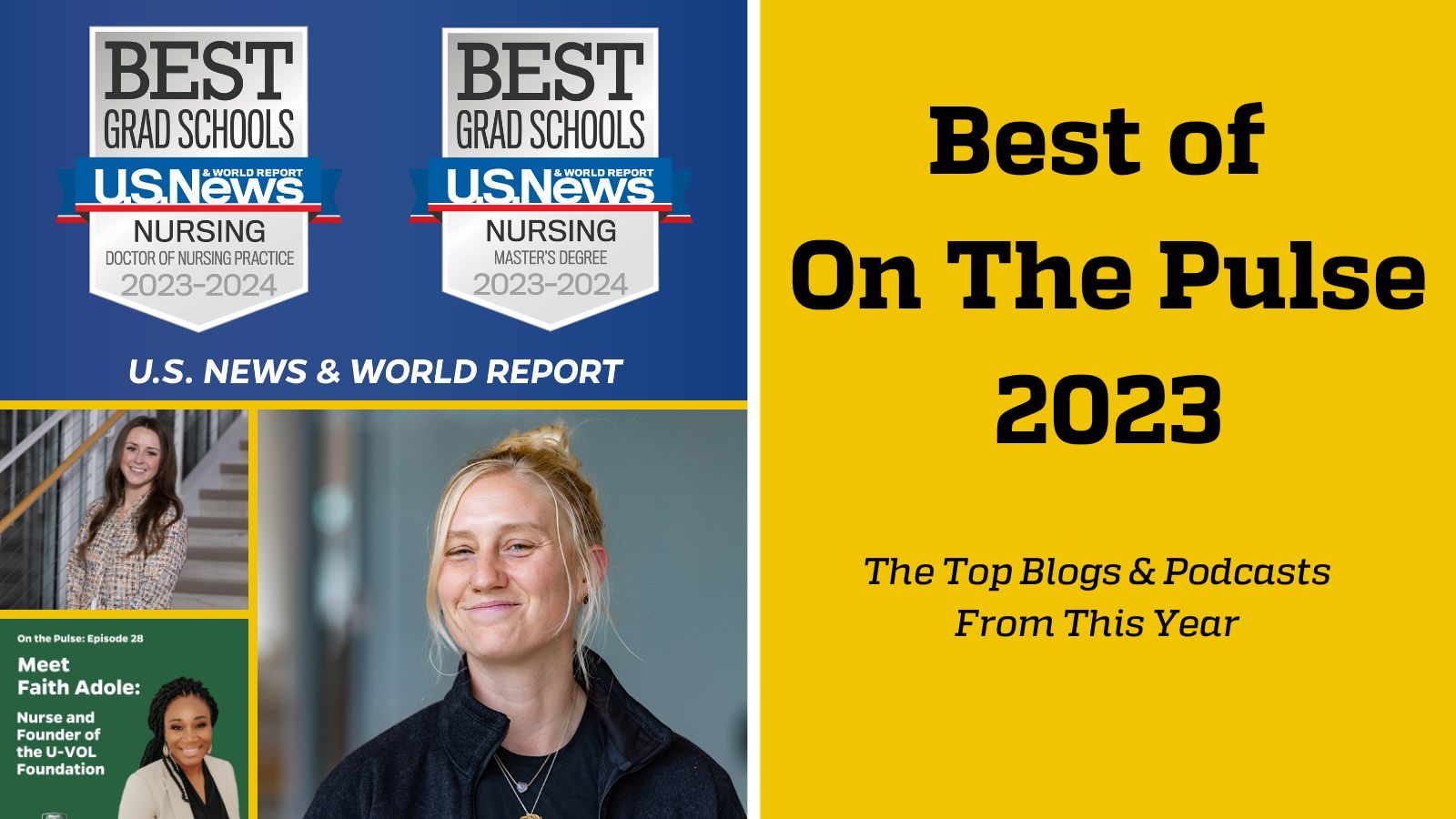
Since the Robert Wood Johnson Foundation and Institute of Medicine released “The Future of Nursing: Leading Change, Advancing Health” in February 2011, Johns Hopkins Nursing has explored how the report’s eight recommendations are being addressed by nurses and nurse faculty at The Johns Hopkins Hospital, the Johns Hopkins University, and throughout the nursing community.
The Spring 2011 issue featured a roundtable discussion of reactions to the report by Johns Hopkins healthcare leaders.
In our last issue, guest columnist Susan B. Hassmiller, PhD, RN, FAAN, senior advisor at the Robert Wood Johnson Foundation, described how the report’s recommendations will help transform nursing education, leadership, and collaboration.
For this issue, we interviewed Johns Hopkins nursing leaders Dean Martha Hill, PhD, RN, and Karen Haller, PhD, RN, Vice President for Nursing and Patient Care Services at The Johns Hopkins Hospital, about the impact of the report’s recommendations on nursing practice and education today and reveal their hopes for how it will shape tomorrow’s nursing.
Editor: What have you seen as results since the release of the report nearly a year and a half ago?
Haller: To start, it’s received a lot of media attention in part because many of the recommended actions seemed controversial and had some initial pushback from physician and hospital groups. But it’s inevitable that we’ll move forward with these recommendations. So many factors are driving them: The change in [patient] demographics, a projected physician deficit by the end of the decade, an aging population with chronic diseases that are amenable to nursing interventions, and an unsustainable 17 percent of GNP [gross national product] now spent on healthcare.
Hill: A good example of the media coverage is the recent article in The New York Times (“More Stringent Requirements Send Nurses Back to School,” June 23, 2012). New York State is now calling for 80 percent of their nursing workforce to hold a bachelor’s degree by 2020. The reporter highlighted evidence showing the better educated the nurse, the better the patient care and outcomes-an argument that’s hard to refute.

Haller: We’ve adopted the 80 percent recommendation here at The Johns Hopkins Hospital and hope to exceed it in the near future. It’s the basic education we need today, but we’re also encouraging the workforce to become nurse practitioners and to actively engage in continuing education.
Editor: Were you surprised by any of the eight recommendations?
Haller: The scope-of-practice issue is one of the most out-of-the box discussions to come out of any report. The right questions are raised: Should insurers be required to cover the services of advanced practice nurses? Are unduly restrictive state regulations governing the practice of advance practice nurses restraint of trade? Why is one practice safe in Pennsylvania, for example, but not in Maryland?
Hill: I didn’t expect to see nurse residency programs specifically recommended. It’s a strong statement that calls for resetting expectations for new graduates and for their employers, and it shifts responsibility to hospitals to enhance orientation programs. The notion of a residency defines a very clear category of transition combining new hire orientation and bedside mentoring to create a professionally mature staff nurse.
Haller: It’s very similar to the physician residency programs; however there is no funding for it and the report proffered no recommendations for doing so. Ultimately it’s a great recommendation, but it doesn’t go far enough. At Hopkins [Hospital] we are fortunate to have new orientation programs funded through one of the state grants designed for this purpose. I feel confident now that the grant will be funded again.
Editor: Are the recommendations creating significant change in patient care?
Haller: The report added to the momentum surrounding scope of practice. Today in hospital acute-care settings, we’re giving more responsibilities to nurse practitioners. The same needs to happen in primary care, but the reimbursement issues are limiting progress.
Hill: And isn’t there a paradigm shift to more preventive and primary care? The report and the research behind it are calling for a system where providers, patients, and their families work together to check and balance one another, while keeping control of costs. That’s a change that creates motivation for all to work on a team.
Haller: In the healthcare community many continue to believe that the U.S. public prefers to see a physician. Target and Wal-Mart are clearly demonstrating otherwise, that what the public wants is to receive care quickly from a competent person. NPs taking care of common problems – such as simple infections – in a variety of settings – give the American public the access they want and less waiting in an emergency room or doctor’s office.
Editor: Do you see challenges to this “blueprint for the future?”
Hill: The call for nurses to be able and committed to lead change faces numerous challenges. Too often we are out-of-sight, out-of-mind. We have at our fingertips huge databases of aggregate numbers, numbers that answer the question “What does it take to make systems level changes?” Our DNP programs are “just-in-time” in preparing nurses as the clinical professionals who can come to the local and national decision-making tables and write policy and guidelines.
Haller: Nurses will have to step up and meet the educational requirements needed to be at those tables. It’s a challenge as well as a gift. Today’s nurse has to prepare to take on these roles, and not expect that they will just be given.
Editor: What are the opportunities the recommendations bring to nursing?
Haller: Every time I talk with a group I tell them this is an evidence-based report – every recommendation came from data. That’s what gives these recommendations so much power, power that will well position nursing for the future.
Hill: The task now is to ensure there is evidence behind the implementation. We have an opportunity here at Hopkins – with the Hospital and schools of medicine, nursing, and public health – to establish new models for adopting these recommendations and evaluating their impact, all of which will lead to higher quality and more cost-effective care.
Haller: Once again, nursing is part of the solution.
Look for these icons throughout the magazine to see how Johns Hopkins Nursing is addressing the recommendations.
IOM Future of Nursing Recommendations

 You’re Welcome
You’re Welcome Nursing Named Most Trusted Profession for 22nd Consecutive Year
Nursing Named Most Trusted Profession for 22nd Consecutive Year Best of On The Pulse 2023
Best of On The Pulse 2023 From the Dean: Here & Now
From the Dean: Here & Now The Learning Collaborative: ‘I Think I Can, I Think I Can …’
The Learning Collaborative: ‘I Think I Can, I Think I Can …’







